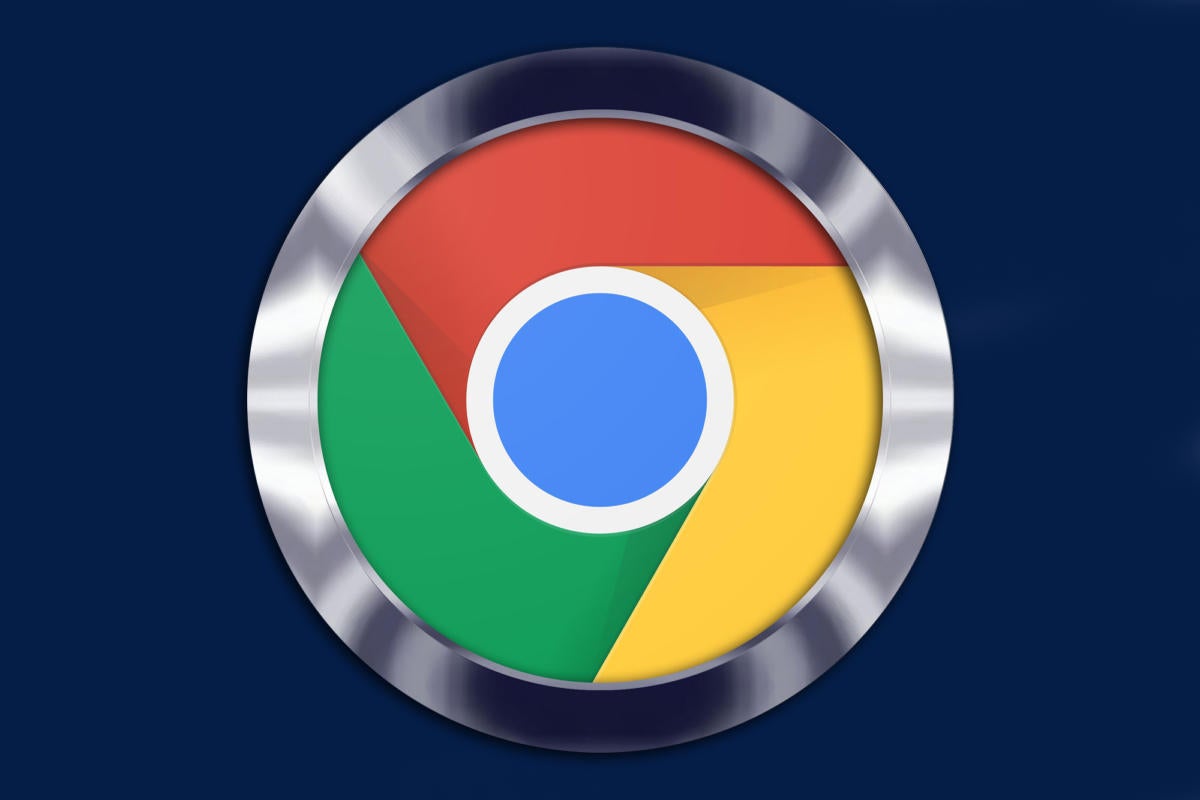Android OS upgrades may be a steaming, hot mess — thanks mostly to the way the platform relies on unmotivated device-makers to do the legwork — but over on the Chrome OS side of things, by golly, it's a whole other story.
Chrome OS upgrades come out like clockwork, quietly and automatically, every two to three weeks. Because of the way that operating system is structured, y'see, it's easy for Google to manage the process internally and create a level of consistency that just isn't possible on Android. (On the flip side, of course, a Chromebook's software can't be customized by manufacturers in the way an Android device's can — something that may be a blessing or a curse, depending on your perspective.)
Here in the real world, that means interface enhancements and other intriguing additions arrive fast and furiously — so often, in fact, that it sometimes gets difficult to keep track of all the shiny stuff showing up on your system. Heck, if you aren't paying close attention, it's almost comically easy to overlook some useful new element that snuck its way onto your Chromebook with little to no fanfare.
Well, consider this your personal guide to some of the most significant new features currently in the works for Chrome OS and coming soon to a Chromebook near you. The specifics of scheduling can always change along the way, but these are all elements that Google's actively working on getting out the door and onto your device — and all of them have the potential to change the way you work for the better.
1. Virtual desktops
If you use a Chromebook for both work and personal purposes, this first feature could be quite the welcome addition. It's support for something called virtual desktops, which effectively allow you to maintain multiple desktop environments within a single Chrome OS sign-in.
It's a slightly confusing concept to wrap your head around, especially if you haven't messed around with anything like it on other operating systems before, but here's the easiest way to understand it: Right now, when you sign into a Chromebook, you have a single desktop — the series of apps, windows, and shortcuts that serves as the foundation for everything you do. With virtual desktops in play, you could add in a second completely separate environment and then switch between the two — so you might have all your work apps and windows open in one, for instance, and then keep your personal stuff completely isolated in its own standalone desktop. And all it'd take is a couple quick clicks to switch between the two environments.
This video shows an early and rather rough demo of the concept in action:
As you can see, Chrome OS's virtual desktops feature is currently set to support up to four separate desktop environments. Its development is still in the early phases, but the earliest it's likely to arrive on most systems is with Chrome OS 74, which is slated to show up in late April.
2. An easier way to find and manage apps
Chrome OS now supports a huge range of app types: web apps, Chrome apps, progressive web apps, Android apps, and even Linux apps. That's turned Chromebooks into uniquely versatile, platform-defying productivity machines — which is obviously fantastic — but it's also created a confusing situation where you have a zillion different places to look for apps and no centralized interface to manage 'em all.
Well, prepare to stop flailing, for Google's working on an answer: First, a new under-development Apps page would serve as a unified interface for dealing with every app installed on your system, regardless of where it came from. It'd be akin to the Apps section of Android's settings and would go a long way toward bringing all the different Chrome-OS-supported app types together and making them feel like part of a Chromebook experience instead of the disjointed mishmash they are today.
Second and equally significant, work is underway to let you search for and install Linux apps directly from the Chrome OS launcher. As it stands now, finding and installing a Linux app on a Chromebook is an insanely complicated process, so bringing that function right into the regular Chrome OS launcher would be a massive improvement in user-friendliness.
My hope is that the move would be accompanied by the introduction of similarly native-feeling systems for finding and installing web apps and Android apps right from the launcher, too — both of which had been possible at one point but were disabled for various vague reasons a while back. That'd turn the Chrome OS launcher into a unified place for finding and installing practically any app that's compatible with a Chromebook and would push the Chrome OS experience back toward its original simple and easy-to-understand nature.
Timing on this one is still up in the air.
3. More native-like treatment of Linux apps
Speaking of apps, Linux apps on Chromebooks still feel like a bit of a tacked-on addition — a useful way to expand what your Chromebook can do, to be sure, but also more of an awkward appendage than a true native part of the operating system. Google's got several fixes in the works that should help with this and make Linux apps seem more at home in the Chrome OS environment.
First, it'll soon be easier to access files while using a Linux app on your Chromebook. Right now, Linux apps are able to access only a specific area of your device's storage that's designated explicitly for Linux app use. That's part of how Google maintains Chrome OS's unusual security setup and keeps the main operating system isolated from these potentially compromising local programs, but it also makes it pretty tricky to open files or find what you need while using a Linux app — since you basically have to copy or move things around manually ahead of time in order to do that.
Soon, you'll be able to easily share entire folders with the Linux part of your system — possibly as early as the Chrome OS 73 release, which is slated to arrive in mid-March.
Beyond that, engineers are working on a way to let Linux apps access your Google Drive storage, your Android-app-related files, and also files from a USB storage device, should you be so inspired. All of that could also show up broadly as soon as the Chrome OS 73 release, in a matter of weeks.
And finally, in Chrome OS 74, in late April, we could see the long-awaited addition of audio playback support for Linux apps — which would open the door to a level of advanced audio editing work not currently possible on Chromebooks.
4. Support for third-party Android keyboard apps
Google's on-screen Chrome OS keyboard has gotten a lot better over the years — with a much more Android-like appearance and the ability to be shrunken down into a small, floating window as of a recent update — but it's still not as fully featured or pleasant to use as Google's Gboard Android keyboard or other third-party Android keyboard options.
We've heard vaguely about support for Android keyboard apps coming to Chrome OS at some point, and now, it seems like that day might actually be growing near. With Android Pie slowly making its way to Chromebooks (as the back-end software that allows Android apps to operate), a new system is showing up that lets you set a third-party Android keyboard app as your default on-screen input method.
It's plainly a work in progress and not yet polished enough to be ready for prime time, but its existence is a promising sign that — yessirree, Billybob — things are a-cookin'.
5. A customizable "super key" on a Chromebook's keyboard
Some Chromebooks — namely Google's own Pixel-branded devices, as of the moment — have a dedicated key on their physical keyboards for pulling up the Google Assistant. Some Chromebook owners, myself included, find that key to be of little practical use (other than providing the opportunity to occasionally open Google Assistant by accident and then quietly mumble obscenities while waiting for it to close).
Soon, it seems Google will allow that Assistant key to become a customizable "super key" that can be mapped to any number of more useful commands. It's something that's been under discussion since the fall of 2017 but seems to be picking up fresh steam lately, with lots of active discussion among Chrome OS developers and an official "under review" status change just days ago.
6. A native system for grouping browser tabs
This one's technically a Chrome browser feature — not limited only to Chrome OS — but it'd certainly have a huge impact for those of us in the Chromebook world: the ability to organize open browser tabs into groups that'd remain in place and stay synced even across multiple devices.
There are third-party Chrome extensions that can do similar things already, but bringing a native system for that kind of organization directly into Chrome would be a pretty significant step.
The feature is visibly under development as we speak, though it's still extremely unfinished and rough around the edges — so it may be a while yet before we see anything final slithering its way to the surface.
7. The ability to make entire Google Drive folders available offline
Despite some long-standing myths to the contrary, Chromebooks these days are quite capable offline. (You already know that, I realize — but not everyone is so bright and charming.) If you rely mostly on Google Drive for storage, though, there's no great way to keep your Drive-associated files synced with your local system and thus always available with or without an active internet connection.
Notably, Google does have an option for making recently used Docs, Sheets, and Slides files available offline — but that works only with recently accessed files and doesn't extend to general files beyond those specific types.
From the looks of it, that's about to change: On at least some devices, folks have been noticing a new feature being tested that allows you to set entire Drive folders to be accessible offline in Chrome OS. It's currently available only in the beta version of the latest release (and doesn't even seem to be available on all devices yet, based on my own experimentation) — but clearly, the wheels are a-turnin'.
Bonus: Some recently rolled out new features
Chrome OS is constantly getting updates, and in addition to all the new goodies being actively developed, there's plenty of worthwhile stuff that's come along in recent months and may or may not have caught your eye.
I put together a list of noteworthy new features from last fall here, including some super-useful hidden gestures and shortcuts that showed up silently, without any real announcement or indication that they were there.
Earlier this month, meanwhile, Google expanded the availability of its Instant Tethering feature — which makes it possible for your Android phone to automatically share its network connection with your Chromebook whenever Wi-Fi isn't available. You'll need a compatible phone and Chromebook in order to be able to use it, but the list of supported devices is much longer than it used to be.
And finally, if you ever find yourself sharing your Chromebook with a kiddo, rodent, or other small mammal, take note: Google's Family Link program now allows you to monitor and control all sorts of aspects of your offspring's experience. It doesn't take long at all to set up and is well worth looking into.
Beyond that, stay tuned: Here in the land o' Chrome OS, things always move quickly — and there are bound to be even more interesting enhancements and additions on the horizon before long.
Sign up for my weekly newsletter to get more practical tips, personal recommendations, and plain-English perspective on the news that matters.

[Android Intelligence videos at Computerworld]


























































